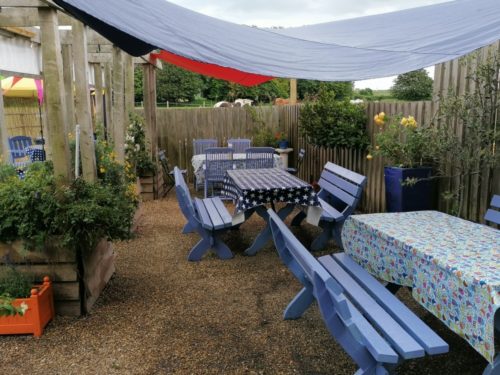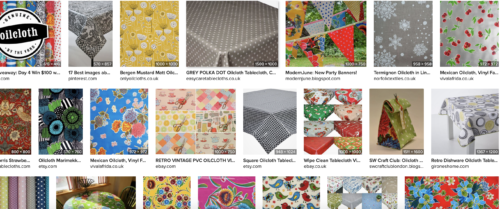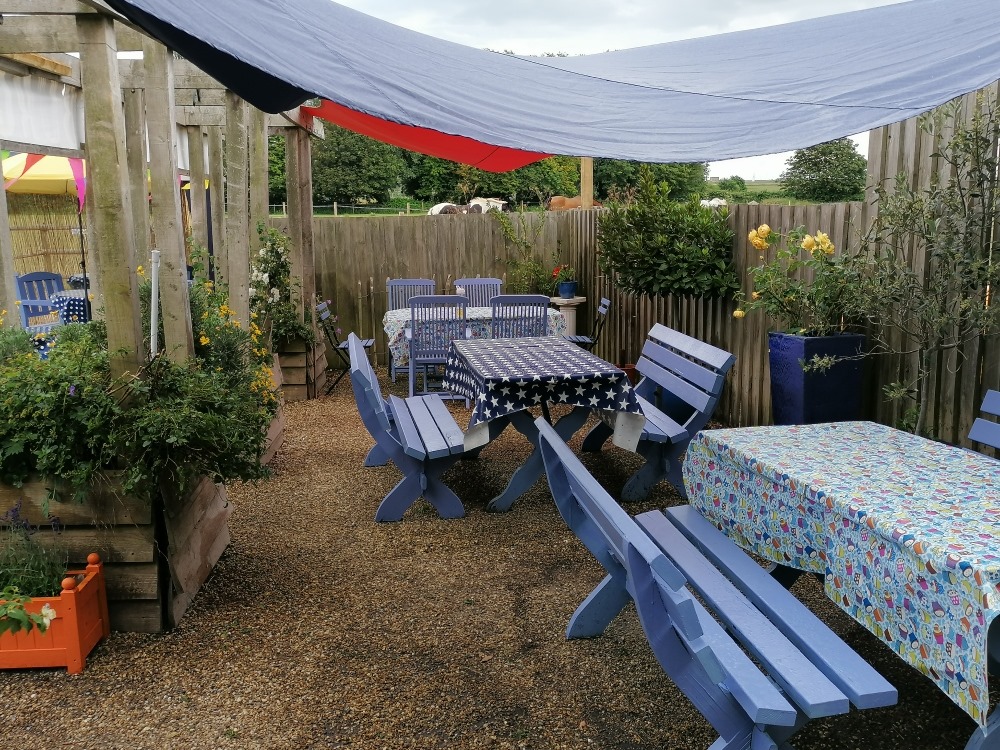
My friend is opening up her cafe slowly because of COVID and has put a number of tables outside. To keep everything as cleanable as possible she opted for oilcloth. It’s durable, pretty, and can be wiped down with bleach thousands and thousands of times.
Traditional oilcloth, also known as enameled cloth or American cloth, is close-woven cotton duck or linen cloth with a coating of boiled linseed oil to make it waterproof. It is tough, resilient, biodegradable and gorgeous! The modern stuff is made from PVC which isn’t quite as green but as it lasts so long we’ll cut it some slack.
Historically, pre-19th century, oilcloth was one of very few flexible, waterproof materials that were widely available. Leather was expensive—very expensive in large pieces—and required regular maintenance if often wetted. Oilcloth was used as an outer waterproof layer for luggage, both wooden trunks and flexible satchels, for carriages and for weatherproof clothing]
The most familiar recent use was for brightly printed kitchen tablecloths. Dull-colored oilcloth was used for bedrolls, sou’westers, and tents. By the late 1950s, oilcloth became a synonym for vinyl (polyvinyl chloride) bonded to either a flanneled cloth or a printed vinyl with a synthetic non-woven backing.

I’m not being paid for this but I looked at oilclothbytheyard.com and had a massive nostalgia rush for $5-6 a yard! When I was a kid every farm kitchen had this on the kitchen table. You can roll pastry on it, clean chickens, sew, write (the pen feels great on the paper with a soft backing!) and just wipe it down with bleach or disinfectant in-between tasks.
To make a pretty oilcloth in a step-by-step go here.
This one is rougher but has a good basic technique to make a traditional oil cloth tarp – within the next hour – by following along with Bob Wayne Jaeger in this FANTASTIC video. He explains a lot about the way it works as well as teaching you how to make this cloth. By the way, there is an article on the website outlining the steps as well here: http://onefootinthewild.com/how-to-ma…

